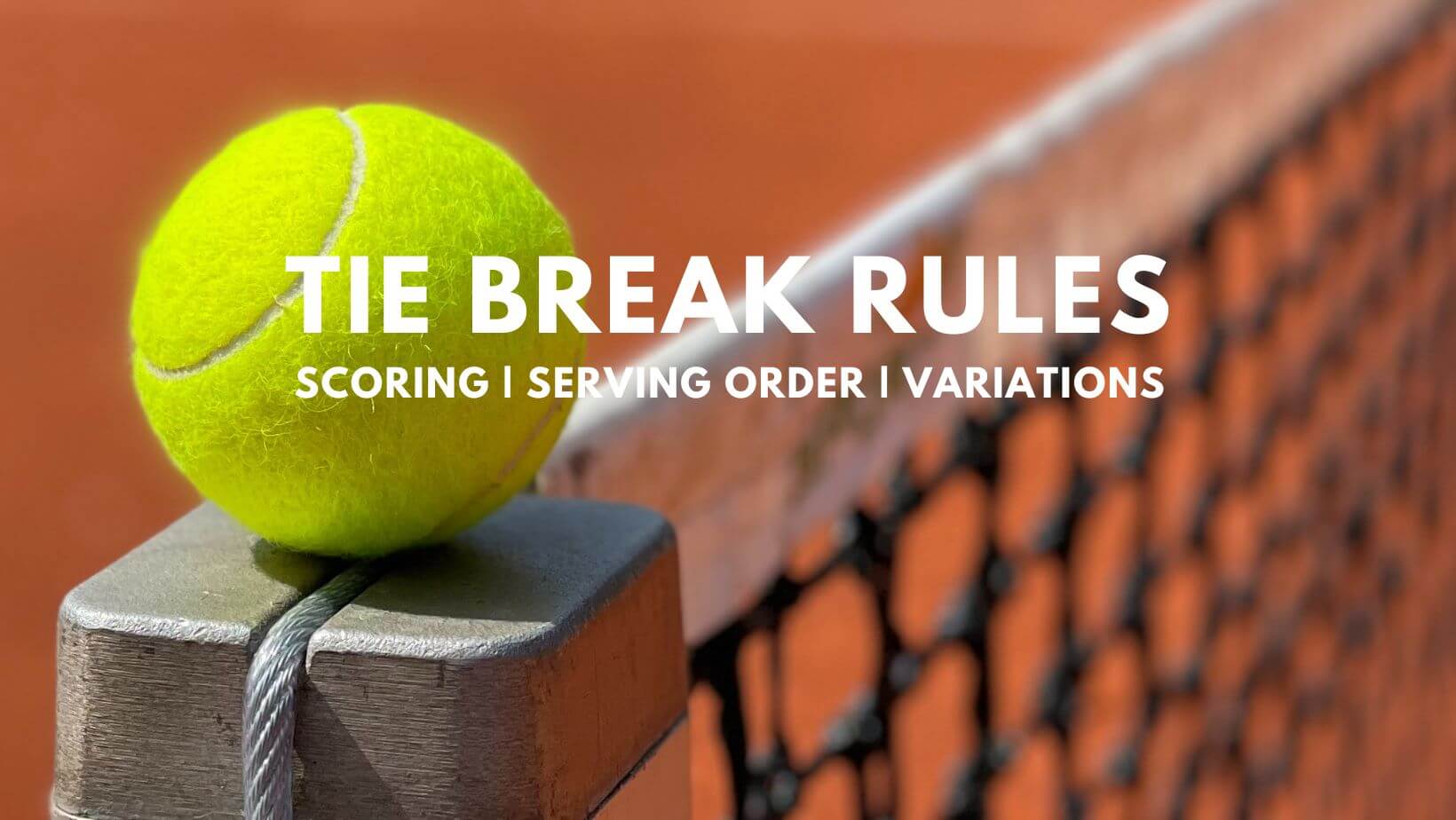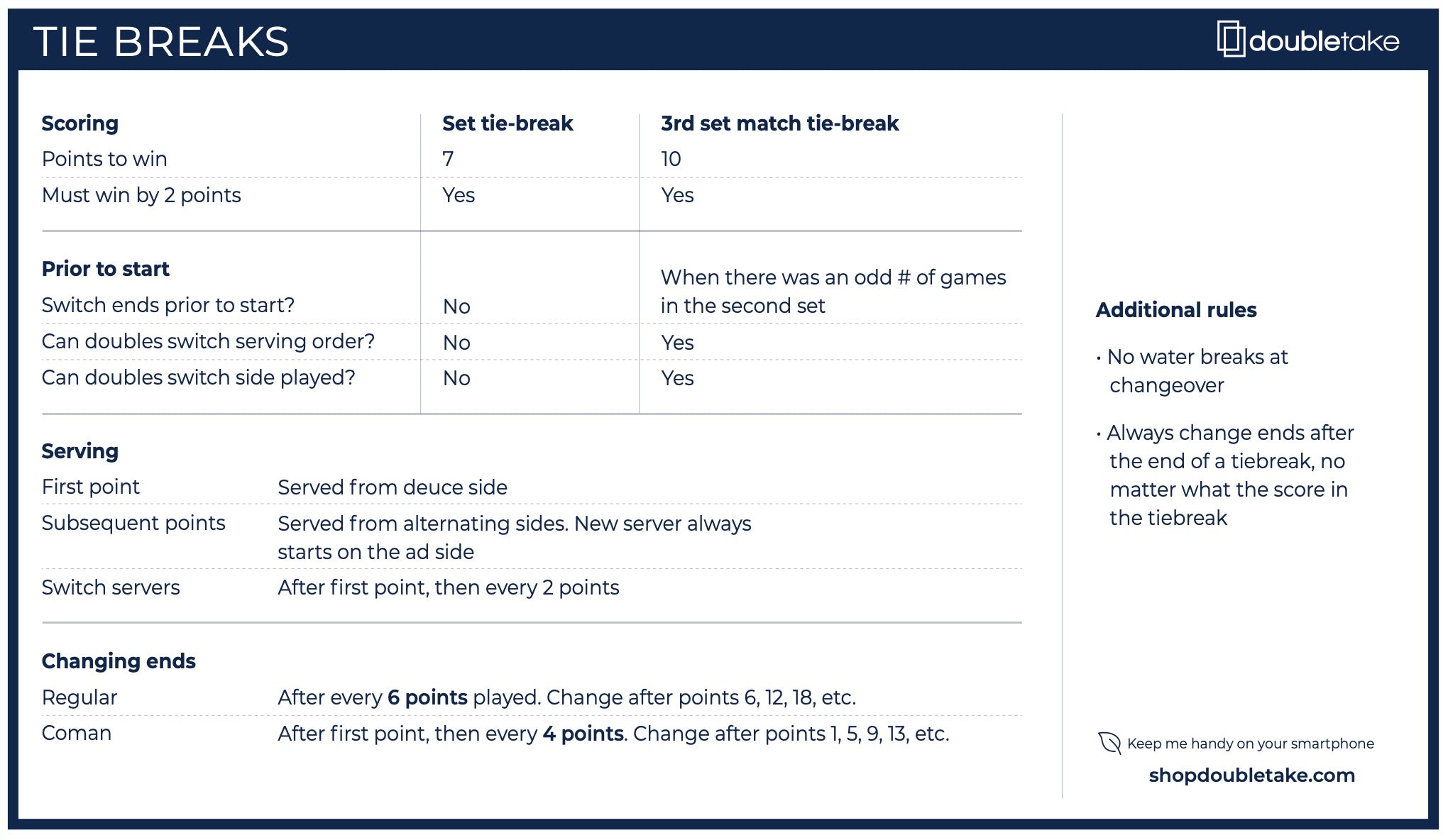Overview of Tennis Tiebreak Rules

A tiebreak is a method used in tennis to decide a set when the score reaches 6-6. The purpose of a tiebreak is to break the tie and determine a winner for the set.
The scoring system in a tiebreak is different from the regular scoring system used in tennis. In a tiebreak, points are awarded as follows:
– The player who wins the first point scores one point.
– The player who wins the second point scores two points.
– The player who wins the third point scores three points.
– And so on.
The first player to reach seven points wins the tiebreak. However, the player must win by a margin of two points. If the score reaches 6-6 in the tiebreak, the game continues until one player wins by a margin of two points.
The rules for serving and receiving in a tiebreak are also different from the regular rules used in tennis. In a tiebreak, the player who serves first serves from the deuce court. The player who receives the serve then serves from the ad court. The players then alternate serving every two points.
Tiebreaks can be a very exciting part of a tennis match. They often provide a dramatic conclusion to a close set.
Strategies for Playing Tiebreaks: Tennis Tiebreak Rules
Tennis tiebreak rules – Tiebreaks are a crucial part of tennis, often deciding the outcome of close matches. To excel in tiebreaks, players must employ effective strategies for serving, returning serves, and maintaining mental focus.
Serving Effectively
- Serve aggressively: Hit powerful serves to force errors or keep opponents off balance.
- Mix up serve placement: Alternate between wide and down-the-line serves to prevent opponents from anticipating the shot.
- Use a variety of serves: Utilize different serve types (flat, slice, kick) to keep opponents guessing.
Returning Serves and Constructing Points
- Be prepared for big serves: Anticipate aggressive serves and adjust footwork accordingly.
- Return deep: Aim to return serves deep into the court to control the point.
- Move forward to pressure: After a deep return, approach the net to force errors or create opportunities.
- Stay patient: Avoid over-hitting or rushing shots, especially in high-pressure situations.
Mental Toughness
Mental toughness is essential in tiebreaks. Players must:
- Stay focused: Maintain concentration and avoid distractions.
- Embrace pressure: View tiebreaks as an opportunity to showcase skills.
- Learn from mistakes: Analyze errors and make adjustments to improve performance.
- Control emotions: Stay composed under pressure and avoid negative self-talk.
Notable Tiebreaks in Tennis History

Tiebreaks have played a pivotal role in shaping the outcome of major tennis tournaments, showcasing the resilience and tactical prowess of the players involved. Here are a few notable tiebreaks that have left an indelible mark on the sport’s history:
Wimbledon 2008: Nadal vs. Federer
In the epic 2008 Wimbledon final, Rafael Nadal and Roger Federer engaged in an unforgettable tiebreak in the fifth set. Federer held a 5-3 lead before Nadal rallied to win the next four points, eventually securing the set and the championship.
Federer’s serve-and-volley tactics proved ineffective against Nadal’s relentless groundstrokes. Nadal’s ability to control the baseline and dictate the pace of the game allowed him to dominate the tiebreak and secure his first Wimbledon title.
Australian Open 2012: Djokovic vs. Murray
The 2012 Australian Open final featured a thrilling tiebreak in the fourth set between Novak Djokovic and Andy Murray. Murray had a 6-3 lead before Djokovic fought back to win the next six points, claiming the set and eventually the match.
Djokovic’s aggressive baseline play and relentless return of serve proved too much for Murray to handle. Murray’s attempts to mix up his shots and employ a serve-and-volley approach were unsuccessful, as Djokovic’s superior court coverage and anticipation gave him the edge in the tiebreak.
US Open 2015: Federer vs. Wawrinka, Tennis tiebreak rules
The 2015 US Open semifinals featured a dramatic tiebreak in the fourth set between Federer and Stan Wawrinka. Wawrinka held a 5-2 lead before Federer rallied to win the next five points, taking the set and eventually the match.
Federer’s tactical shift from an aggressive baseline approach to a more conservative serve-and-volley style proved effective against Wawrinka’s powerful groundstrokes. Wawrinka’s inability to adjust to Federer’s change in tactics cost him the tiebreak and ultimately the match.
Tennis tiebreak rules dictate a sudden death scenario when the score reaches six games all in a set. In such a scenario, the player who wins the first seven points with a two-point advantage emerges victorious. This rule has often favored aggressive players like Mayar Sherif , known for her powerful serve and baseline play.
Her ability to dominate tiebreaks has been crucial in her recent success, showcasing the importance of understanding and executing tiebreak strategies in modern tennis.
Tennis tiebreak rules, a unique set of regulations that govern the outcome of a close match, share similarities with the unwavering determination of Kate Middleton , who gracefully navigated the challenges of royal life. Just as tiebreaks determine the winner in a deadlocked game, Kate’s resilience and adaptability propelled her to become a beacon of strength and style in the public eye.